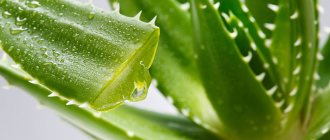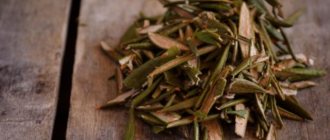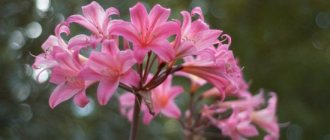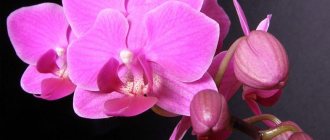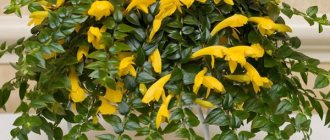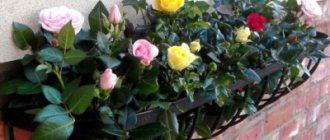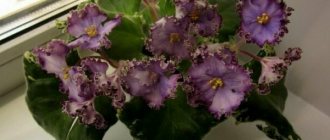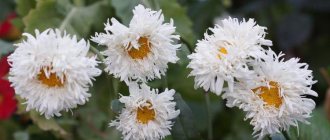Amaryllis belladonna is an exquisite plant whose buds amaze with their magical beauty. The original name is very suitable for this incredible flower, because it was named in honor of the assistant to the goddess Flora, which, in fact, was called Amaryllis.
But the word “belladonna” translated from Italian means “beautiful lady” or “beautiful woman.”
Botanical description and differences from other species
The flower's homeland is considered to be Central and South America , and is also found on the Caribbean islands. Amaryllis is a monocotyledonous bulbous plant. The diameter of the bulb does not exceed 10 centimeters.
The flower has a vertical stem that reaches a maximum of sixty centimeters in height. There are 2-5 large flowers on it, about twenty centimeters wide.
The inflorescences resemble a lily and are colored white and pink . There are lighter and brighter shades. The flowers are collected in inflorescences arranged in two circles and have six petals. From the side, the inflorescences resemble umbrellas. They can consist of several flowers, from two to twelve pieces. Amaryllis flowers smell amazing.
The green leaves are located opposite each other. They can grow to enormous sizes, up to 50 centimeters in length and 3-4 centimeters in width.
After the leaves die, the flower goes into a dormant state. At its end, the foliage, along with the inflorescences, emerges again.
At the end of the twentieth century, Amaryllis began to be called Hippeastrum in literature . Although these two cultures are similar in appearance, especially their flowers, this is the only similarity. All they have in common is that they belong to the same family and both plants have a long dormant period. We wrote in more detail about the comparison of amaryllis and hippeastrum here.
Amaryllis differs in the size of its leaves and flowers, as well as their shades. The leaves do not appear immediately after flowering and quickly grow into a lush cascade of greenery that does not fall to the ground.
Amaryllis belladonna is a bulbous plant with an umbrella of elongated, bell-like, drooping flowers on the crown of a tall, bare peduncle.
Amaryllis belladonna, or Amaryllis beauty, as it is also commonly called, is a monocotyledonous flowering plant of the genus Amaryllis (Amaryllis) of the Amaryllidaceae family.
If you are interested in a flower such as amaryllis, then we suggest that you familiarize yourself with other popular varieties of this beautiful plant. We talked about this in a separate article.
Bloom
Because of the beauty of its flowers, belladonna was called the “beautiful lady.” Having several bulbs and skillfully alternating dormancy and forcing time, you can achieve constant flowering of belladonna throughout the year.
With the beginning of flowering, amaryllis produces 2-6 large funnel-shaped flowers on a high arrow, reminiscent of a lily. Upon completion, the flower needs rest for 2-3 months. Carefully trim the peduncle, reduce watering and wait until the leaves dry.
From this moment on, there is no need to water at all, but move the pot with the bulb to a cool place. Do not feed or water, only spray the soil occasionally.
After 2-3 months, a new arrow will appear and new leaves will begin to hatch. Move the pot to a warm and bright place. Water and feed more often.
Be sure to give your pet a rest period. Otherwise, next time it will either not bloom at all, or the flowers will be weak and small. If during the growing season the amaryllis throws out three flower stalks at once, leave only two to give it the opportunity to bloom next time. Place the cut bud in a vase and it will bloom over time.
Photo
You will see a photo of Amaryllis Belladonna:
Depending on the variety, amaryllis flowers have a variety of shades and amaze with their grace. You can admire this handsome man endlessly. Its flowering will not leave you indifferent. Therefore, this flower is actively used for making bouquets and growing on your windowsill. You will find a detailed description and photo of this plant in separate articles on our website.
Kinds
Even store clerks sometimes confuse African amaryllis with South American hippeastrum. In fact, amaryllis beautiful or belladonna is one species. But recently many hybrid varieties have appeared, including a mixture of these two plants.
Breeders are trying to develop new varieties with different colors, doubleness and larger flowers. So you are unlikely to be able to find pure belladonna on sale. Most likely, you will come across these or other varieties:
- Durban with red bells, white inside.
- The Snow Queen with double snow-white flowers with a cream edging.
- Grandior (Grandeur) with white-pink inflorescences and green insides.
- Red Lion with bright red large flowers.
- Minerva with red flowers decorated with a green and white star.
- Nymph (Nymph) with white double petals dotted with pink lines.
- Double Dragon with coral inflorescences, white at the ends of the petals.
- Lush (Grandeur) with pink petals and green insides.
- Chico (Chico) with green-brown petals of a bizarre shape.
When and how does it bloom?
Belladonna blooms once a year and lasts about two to three weeks . But the flowers do not bloom at the same time. In nature, the plant blooms in late spring or early summer. And in our natural conditions, Amaryllis will delight you with its stunning flowers only in late summer - early autumn.
Once the flower is pollinated, it bears fruit in pink, green and white seed pods. You can find out why amaryllis does not bloom and how to make it produce buds from this material.
Other names
Amaryllis is often confused with the similar hippeastrum, but this is incorrect . Currently, there are more than 200 varieties of hippeastrum, while amaryllis is represented by only two species - Amaryllis belladonna and Amaryllis sarniensis. If we talk about the Russian name, then flower growers call this houseplant amaryllis beautiful.
The main difference between these types of ornamental plants is the flowering period - amaryllis blooms in the fall, while hippeastrums enter the flowering period in winter and spring. A detailed comparison of amaryllis and hippeastrum, as well as descriptions of plants and their photos, can be found here.
Poisonous or not?
Attention! The bulb of the plant is poisonous. It contains the alkaloid lycorine.
On delicate human skin, irritation may appear even from a light touch to the bulb. The stems and leaves also contain poisons, such as amaryllidine, phenanthridine.
When these substances enter the human body, breathing problems arise, saliva production increases, blood pressure rises, and intestinal function worsens. When planting and replanting a flower, be sure to wear gloves .
After the procedure is completed, you should wash your hands thoroughly. Amaryllis should be kept away from children and pets.
Amaryllis
Amaryllis
is one of the owners of the most beautiful flowers among houseplants. It has fairly large inflorescences in the form of bells, which can be of a wide variety of colors. Amaryllis flowers have a very delicate scent and an incredibly impressive appearance, thanks to their tall peduncle.
Amaryllis is a perennial plant. Belongs to the Amaryllis family. This family includes only one species - belladonna. It was named after a shepherdess from the works of the Ancient Greek poet Theocritus. Amaryllis is native to South Africa. This plant was brought to Europe from there.
Amaryllis is a bulbous plant. It has oblong leaves up to 2-3 cm wide, up to 60 cm long. The bulb is pear-shaped. Its diameter can reach up to 12 cm. The flowers of the plant are funnel-shaped, with a fragrant aroma. They can be of completely different colors: white, pink, purple, red, as well as various shades of these colors. The flowers reach a diameter of 5-8 cm. Each flower has six petals with pointed ends.
Article on the topic: Volga Valerian - beneficial properties, description
It is best to purchase amaryllis bulbs for planting in the autumn or spring. The pot should be chosen deep due to the length of the root system that the bulb grows. You need to add drainage to the bottom of the pot (it will prevent the water from stagnating). The soil needs to be light, drainable and nutritious. A good option would be a mixture consisting of leaf soil (one part), peat (one part), turf soil (one part) and sand (one part). It is also possible to buy soil for bulbs in the store.
Before planting amaryllis, its bulb must be carefully examined. If there are roots that have rotted, they need to be removed. If spots unusual for the plant are found on the bulb, they must be eliminated. After inspection, the bulb is soaked in a solution of potassium permanganate to disinfect it. Those places where there were cuts must be treated with crushed coal.
The bulb needs to be buried 2/3 into the soil, but in no case deeper. 1/3 of the bulb should remain above the soil. If you bury it completely, the bulb will disappear. Watering amaryllis that was planted in a pot must be done in a tray.
Location and lighting
Amaryllis requires light, which should be bright and diffused. It is best to place this flower on kona, which are located in the southwest and southeast directions. A window in the south is also suitable, but in this case the amaryllis will need to be shaded during the day. The plant sometimes needs to be turned so that the flower does not fall on its side.
Pot size
The amaryllis pot does not need to be large. The distance between the plant bulb and the pot walls should be 2-3 cm. If this requirement is not met, the amaryllis will begin to multiply at a rapid speed and then it will not have the strength to flower.
It is important that the pot is stable and heavy. Ceramic is best. If the pot is light, the plant will fall during the flowering period.
It is also necessary that the amaryllis pot be deep and narrow in diameter. In a small pot, the plant will not be able to fully develop and grow.
One of the important conditions for planting and proper development of amaryllis is properly selected soil. The best composition would be the following mixture: turf soil, leaf soil, sand, peat and humus. It must be remembered that a layer of drainage must be placed on the bottom of the pot.
Due to the fact that amaryllis is a perennial plant, it should not be replanted annually. The topsoil needs to be replaced. This must be done very carefully so as not to damage the bulb. Replanting should be done once every three or four years. This should not be done more often, unless you need to separate the children.
Amaryllis should be replanted only after it has finished blooming. Place a 1-3 centimeter layer of drainage on the bottom of the pot. Before replanting the plant, it is necessary to prepare the required soil and clean the bulb from rotten roots, dried scales and children. Next, you should immerse the bulb in the ground two-thirds.
Fertilizers and fertilizing
During the growth period, amaryllis requires proper feeding. A complex slow-release liquid fertilizer for indoor plants is perfect for this. It must contain potassium, phosphorus or nitrogen. You should know that you need to use half the dose recommended in the instructions. Amaryllis should be fertilized every 5-6 weeks. In summer, this plant should be fed with fertilizer in which the level of nitrogen is reduced. Feeding that enhances bulbous growth is also good.
Watering the plant should be done carefully so that excess water does not lead to rotting of the bulb.
Temperature
During the summer season, the optimal temperature for amaryllis is 18 - 25°C. In winter 10 - 15°C.
Humidity is not important for amaryllis. You only need to wipe the leaves with a cloth soaked in water for hygienic purposes.
Amaryllis does not need pruning.
Pests and diseases
Red spots and stripes form on the stem, bulbs and flowers - a fungal infection. To prevent amaryllis from contracting this disease, you should follow the watering recommendations and do not overwater it. If infected, use Bordeaux mixture.
Leaves wither and turn pale - rotting. It is necessary to ensure good drainage and replant into drier soil in a new pot.
Blackening of amaryllis flowers - damp air or lower temperature. The situation can be corrected by moving it to a warm, dry place and removing damaged areas of the plant.
Slow growth and leaf fall - amaryllis bug. The plant needs to be treated with an insecticide.
White spots on leaves and stems are mealybugs. If the infection is not severe, wet wiping with a solution of laundry soap can help. If the damage is extensive, insecticides should be used.
Related article: Okra - beneficial properties, description
Damage to the bulbs and subsequent rotting is caused by the onion mite. This pest usually occurs if the air temperature in the room is higher than what the plant requires or the humidity is increased. Another possible reason is high humidity.
The formation of brown spots on the leaves is a false scale insect. To get rid of the pest, you need to treat the leaves with a soap solution.
Yellowing of leaves - aphids. You can get rid of these pests either by removing them with a cotton swab or disk, or by using potassium soap.
In order for amaryllis to bloom often, its care must be as close as possible to the conditions in which this plant is found in nature. It comes from South Africa, where rain is rare and droughts are an almost year-round occurrence.
If this plant does not bloom, there is only one reason for this - improper care.
Reproduction
Amaryllis reproduces by daughters and seeds.
The most common and simplest way is reproduction by daughters. It is necessary to separate the children from the mother bulb during transplantation, remove the damaged roots and plant them in different pots. With this type of propagation, amaryllis will bloom in about 3 years.
When propagated by seeds, amaryllis will bloom no earlier than after 4 years.
Rest period
The dormant period of amaryllis depends directly on the conditions in which the plant is kept. This period is marked by complete loss of leaves. It is necessary to stop watering.
Toxicity/Beneficial properties
Amaryllis bulbs are poisonous and can cause poisoning if they get into food. A large dose of lycorine (a substance contained in the onion) is a strong poison. It was with this that the African natives poisoned their arrows.
The leaves of this plant are medicinal. They are able to cope with cramps and spasms. The juice of the leaves has antibacterial and antiviral properties.
How to care?
- Temperature . In the daytime it should not fall below +23..+24, and at night +18 degrees. The plant reacts negatively to sudden temperature changes. During the growth period it should be +10..+15 degrees. When the plant is at rest, the temperature should fluctuate around +18..+25 degrees.
Watering .
Amaryllis loves moisture. Water for irrigation is used that has settled at room temperature. The soil should not be dry, but also excessively wet. Stagnant moisture will cause leaves to lose color and wilt. The roots will begin to rot. More water is required during flowering. During the dormant period, watering is not needed. You just need to lightly spray the ground. The procedure begins again when the peduncle reaches 10 -12 centimeters.- Light . It should be bright, but diffuse. The flower requires 14-15 hours of daylight. The peduncle and leaves have the peculiarity of reaching towards the sun. Sometimes you need to return them to a vertical position by rotating the container.
- Trimming . Amaryllis Beautiful does not need pruning.
- Feeding . When the plant is in the active growth phase, it is fed once every few weeks with complex mineral and organic fertilizers. In winter and autumn, the flower is in a dormant period and does not require fertilizing (read about the nuances of caring for amaryllis in winter here).
- Pot. Any planting begins with the selection of containers. This plant needs a powerful and stable pot. Amaryllis, due to its widely spread leaves and high peduncle, is very shaky. It’s easy to knock it over with one awkward movement, and sometimes even a sharp stream of wind is enough.
The diameter of the container is selected to match the onion; it should occupy almost all the space inside. The distance between the wall of the pot and the bulb should not exceed 3-4 centimeters.Since the flower has a developed root system, the pot is chosen to be deep enough. The best option is a container that tapers towards the top.
- Transplant . Amaryllis belladonna should not be replanted frequently. Experienced flower growers recommend carrying out this procedure once every 4-5 years, when the flower arrow is almost completely dry. If you replant a flower annually, this will lead to deformation of the roots and affect development and flowering. Instead of frequent replanting, it is necessary to add fresh soil as it settles.
We talked about how to care for amaryllis at home here.
From the video you will learn how to properly care for a flower so that it pleases you with abundant blooms:
Growing Amaryllis belladonna in open ground
Only a sunny area is suitable for growing this crop. The soil must be drained. The bulbs are planted in mid-summer, the depth of the holes is about fifteen centimeters.
And the distance between the plants is approximately thirty cm. With active growth, the flower stalks will need to be supported so that they do not break from the wind.
Amaryllis must be constantly watered, fertilized, and replanted in a timely manner. If you adhere to all the rules described above, you can grow without much difficulty.
Reproduction
By shoots
- First you need to select smooth, strong bulbs that have developed roots. They should be free from cracks, dents, scratches, stains, as well as mold and rot.
- Then the dead gray, brown, and black scales are removed from the bulbs.
The next step is that they need to be placed in a saturated solution of potassium permanganate for 30-35 minutes. Any fungicide is suitable for this procedure.- After the bulbs have been disinfected, they need to be thoroughly dried for 12-14 hours.
- If there are any suspicious places on the bulbs, the modified shoot should be treated with Fitosparin.
- In a pre-prepared pot, half fill the soil.
- The bulb is placed in the container with the blunt end down. Then you need to add soil so that a third of the bulb rises above the ground.
- The soil is compacted, watered with water at room temperature and placed on the window.
Seeds
First, the seeds must be obtained from the flower. And for them to appear, the plant is cross-pollinated with a brush.- They ripen within a month. After ripening and harvesting, the seeds are immediately planted.
- The seeds are poured into moist soil and placed in a dark, warm place.
- The first shoots will appear within a month if you water regularly.
- When the sprouts grow and become more hardy, they are planted in pots.
- It is worth noting that with this method of propagation, flowering can not be expected in the near future.
You will find all the nuances of planting and growing this plant in this article.
Belladonna transplant
And our lady always tolerates replanting very painfully and does not like unnecessary disturbance, so we separate the baby and replant the plant in fresh soil rarely, preferably once every four to five years. Amaryllis belladonna is a family plant and the close cohabitation of bulbs in a common communal apartment, with good care and nutrition, only contributes to its lush flowering.
Therefore, when replanting, it is advisable to immediately plant several bulbs together, three or four per pot.
Annually overgrown with daughter bulbs, the plant grows a whole brood of young plants over several years of growing season. So, regarding the volume of the pot, one thing can be said - low, spacious and wide containers provide the most favorable conditions for the growth and development of amaryllis culture.
The soil for planting the belladonna plant is prepared loose and nutritious. Usually it is a mixture of light forest soil or humus (one part), turf soil (one part) and river sand (two parts). And for bulbs growing in a pot for several years, it is very useful to annually replace the top part of the soil. The plant also needs good drainage. Amaryllis belladonna is planted in a pot so that the top of the bulb rises only slightly above the soil.
Diseases
Sometimes Amaryllis is affected by a fungal infection . It can appear on the stem, flowers and bulbs. Expressed as red spots or stripes. To prevent disease, you need to wet the flower as little as possible during watering. If the plant does become ill, special preparations are used: Bordeaux mixture or Fundazol.
Yellowed and deformed leaves indicate that thrips or aphids have appeared on the flower. To get rid of the disease, you need to wash the leaves with a soapy solution. This is done immediately after pests have been discovered.
We talked more about diseases and pests in this article.
Home care
If you properly care for the fire lily, the bulb will delight you with regular flowering for up to two decades. If the periods of activity and dormancy are observed, the plant will bloom twice a year. Achieving such results is only possible if you work hard.
Location and lighting
The guest comes from the desert, so it requires a lot of light. But in the heat he should be absent-minded. Place pots of amaryllis on southern windowsills. As a last resort, south-east and south-west windows are suitable. On dark northern windows, the plant may not produce color at all. In autumn, when the days become shorter, it is advisable to use additional lighting to increase daylight hours to 16 hours.
After flowering is completed, you can move the flowerpots to a dark, cool place. For example, take it to the basement or hide it under the bathroom.
Do not forget to regularly rotate the pot along its axis, since in one position the peduncle will stretch towards the light and lose its verticality.
Temperature
When belladonna develops, it needs stable heat: +20-23°C. During the rest period, it is advisable to reduce it to +10-15°C. Make sure that the air in the room does not cool below 8 degrees, as this will have a bad effect on the condition of the bulbs.
Watering
You need to be careful with watering; after all, you are dealing with a representative of the South African desert. It is best to add life-giving moisture through a pan. If you still dare to pour into the pot, drain off the remaining water after watering to prevent moisture from stagnating in the roots.
When the amaryllis is actively growing, releasing a flower arrow, water it once every four days. As you grow, increase the frequency to twice a week.
After dropping the leaves, increase the intervals between waterings. Wait a day or two after the earthen ball has dried and only then add water. The dry regime must be maintained for two months.
After storing the flowerpot in the basement, check from time to time to see if the soil has become acidic.
Air humidity
Amaryllis is used to living in the desert, so it does not need high air humidity. It only needs to be sprayed on very hot days, when this figure drops below 50%. When the bulbous plant is in a state of rest, moisten the soil with a spray bottle once every three weeks so that it does not dry out at all.
It is not advisable to raise the humidity above 80%. This is fraught with the disease stagonosporosis.
It is impossible to spray the plant during flowering and resting bulbs.
The soil
You can purchase ready-made soil for a blooming “gramophone,” but if you want to tinker, assemble the mixture yourself:
- 40% turf land;
- 20% peat;
- 20% sand;
- 20% humus.
In such proportions, the substrate will be nutritious with good water and air permeability.
Feeding and fertilizers
During the growing season, a member of the Amaryllis family should be fertilized once a month. As soon as the buds appear, switch to once every 10 days. Take fertilizer for flowering plants. Make sure that the composition contains sufficient phosphorus and potassium, but the presence of nitrogen should be minimized. You can use mullein by diluting it tenfold with water.
When the plant is at rest, it does not need feeding.
Transfer
Choose a pot for belladonna that is narrow but tall. It must be heavy in order to hold a dense, tall peduncle. The ideal dimensions are 20 cm in height and 15 cm in diameter. The next time you replant, take a pot just 2 cm wider.
It is recommended to replant after 4-6 years, but some do it every year to check the condition of the bulb. Be careful - the roots are very thin and can be easily damaged.
It is best to start replanting in the spring, when flowering has passed and the stem has withered. If it is not possible to carry out the procedure, renew the top layer of the soil mixture.
Step-by-step instruction:
- Fill the flower thoroughly with water, wait 2-3 days so that the bulb can be easily removed.
- Pull out the onion, remove rotten and dried parts of the roots.
- If there are defects, disinfect them and treat them with crushed activated carbon.
- Separate the children so that they do not interfere with flowering, and plant them separately.
- Cover the drainage layer with prepared soil mixture. It should cover 2/3 of the pot.
- Place a layer of sand in the center. Install the bulb and add soil mixture. The bulb should stick out halfway from the ground.
It is imperative to wear gloves when working with flowers. Due to its toxicity, keep it out of the reach of children and animals.
Trimming
Regular pruning of amaryllis is not necessary. After flowering has passed, the leaves die off on their own, saturating the bulb with nutrients. If they wilt but don't dry out, you can cut them off at the base.
Content issues
The main problem with growing this exotic plant at home is the lack of flowering . There are several reasons for this behavior and the main ones are:
lack of lighting;- severe deepening of the bulb during transplantation;
- insufficient amount of nutrients in the soil;
- plant root disease;
- a short rest period for the flower;
- separation of the children from the mother bulb is required.
In general, amaryllis is a rather whimsical plant , and novice gardeners constantly wonder about the lack of its flowering. But almost all problems can be solved, and after eliminating all the shortcomings of home breeding, the plant will bloom without fail. It is enough to inspect the root system, eliminate diseases and pests, and also provide the amaryllis with a sufficient period of rest.
Amaryllis and hippeastrum - eternal confusion
Hippeastrum, like amaryllis, is part of the Amaryllidaceae family. But the genus of Hippeastrum is much more numerous - there are about 90 species in nature alone. And if you add selective varieties, you get about two thousand. Even sellers in specialized stores often get confused about these plants.
Differences between amaryllis and hippeastrum - table
| Amaryllis | Hippeastrum | |
| Flowering period | End of August and beginning of September. | End of February and beginning of March. |
| Motherland | Africa. | South America. |
| Aroma | Strongly expressed. | Practically absent. |
| Flower diameter | 10–12 cm. | 6–8 cm. |
| Number of colors | Up to 12 pieces. In most cases 4–6. | Maximum 6 flowers. Most often 2–4. |
| Coloring of natural varieties | Shades of pink - from almost white to almost red. | Red, orange, pink, white, yellow, greenish, purple and various combinations thereof. |
| Leaves in the process of flowering | None. Appear after the peduncle. | They remain in place. |
| Peduncle | Quite dense and without voids. It's a little purple. | Hollow tube. It cracks easily when pressed. Mixed with the green color is a grayish-brown tint. |
| Peduncle length | 40–60 cm. | 60–70 cm. |
| Bulb shape | Pear-shaped. | Round or slightly elongated at the bottom, slightly flattened on the sides. |
| Scales | Ash-gray, with a slight “fringe” along the upper edge. | They are very reminiscent of ordinary onions, only white or greenish in color. |

